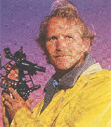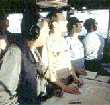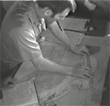
Navigation is Magic When I was a youngster my family always had one sort of boat or another. By the time I was learning the times table in school, my father was teaching me how to navigate in the coastal waters of Southern California. I fell in love with navigation. When I got to university I had the chance to begin sailing competitively on boats in the 25 – 55 foot range. Because I already knew how to read a chart and plot a course, I was often asked to do the navigation. This led me deeper into navigation, and into an interest in sailboat racing tactics. I even learned how to navigate by the stars. Every navigator who has ever crossed an ocean using celestial navigation, then predicted a landfall and seen it happen as predicted knows that navigation is more than a skill, it’s a magical art. The rise of inexpensive, extremely accurate, and easy to use global positioning systems has been a death knell for celestial navigation. I own a sextant that cost several hundred dollars in the mid-1970s. Using this and other tools, I could, under good conditions at sea, plot the boat’s position to an accuracy of about .5 nautical miles in about 30 minutes of work. A handheld GPS now costs less than one hundred dollars, provides a position accurate to a few meters, and does this hundreds of times each second. I am probably in the last generation of sailors to learn celestial navigation. GPS takes most of the work out of navigation, the magic now belongs to engineers, but the fun still belongs to the sailor.
|
||||||
 |
 |
 |
 |
|||
| Micronesian Navigation Sloan Foundation 1978 - 1980 |
MoBoard: Ship Radar Navigation US Navy: 1982 - 1984 |
US Navy Ship Navigation US Navy: 1984 - 1985 |
Robust Ship Navigation Santa Fe Institute: 2002 - 2005 |
|||